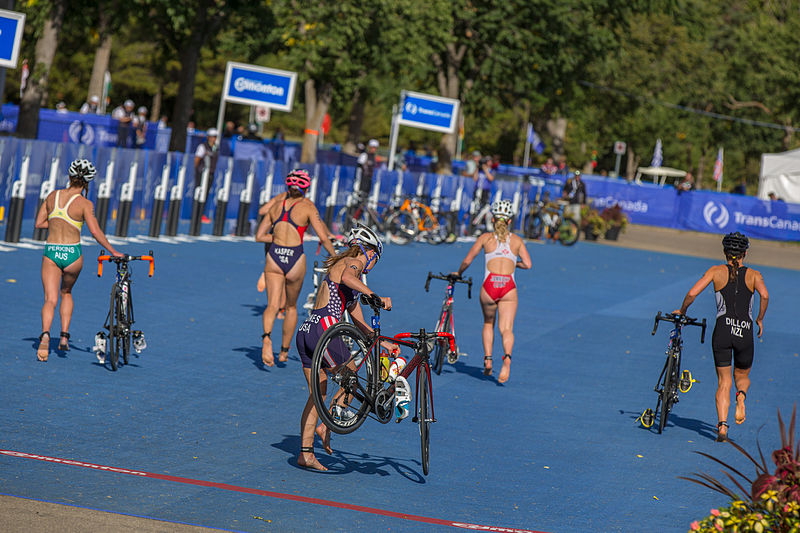
Weich C, Jensen RL, Vieten M. Triathlon transition study: quantifying
differences in running movement pattern and precision after bike-run transition.
Sports Biomech. 2017 Nov 15:1-14. doi: 10.1080/14763141.2017.1391324. [Epub ahead
of print] PubMed PMID: 29141506.
- PMID: 29141506 DOI: 10.1080/14763141.2017.1391324
Weich et al., 2017 untersuchten, welchen Einfluss das Radfahren auf eine unmittelbar folgende Laufperformance hat.
Nach einer Radfahrt über die olympische Triathlon-Distanz auf einem Rollentrainer wurde ein 5000 m Lauf auf der Bahn durchgeführt. Dabei wurde die Laufeffizienz (Bodenkontaktzeit, Bewegungspräzision) über das Bewegungsmuster quantifiziert. Die Ergebnisse wurden mit einem Lauf über 5000 m ohne Vorbelastung verglichen.
Innerhalb der ersten 5 Minuten nach der Radfahrt war ein geringere Laufeffizienz messbar. Dies sollte für eine optimale Pacing-Strategie berücksichtigt werden.
[Zusammenfassung nur anhand des Abstracts geschrieben]
1. Sports Biomech. 2017 Nov 15:1-14. doi: 10.1080/14763141.2017.1391324. [Epub ahead
of print]Triathlon transition study: quantifying differences in running movement pattern
and precision after bike-run transition.Weich C(1), Jensen RL(2), Vieten M(3).
Author information:
(1)a Department of Sports Science , University of Constance , Constance ,
Germany.
(2)b Department of Health, Physical Education & Recreation , Northern Michigan
University , Marquette , MI , USA.
(3)c Department of Sports Science , University of Constance , Constance ,
Germany.Various publications discuss the discrepancies of running in triathlons and
stand-alone runs. However, those methods, such as analysing step-characteristics
or ground-contact time, lack the ability to quantitatively discriminate between
subtle running differences. The attractor method can be applied to overcome those
shortcomings. The purpose was to detect differences in athletes‘ running patterns
(δM) and movement precision (δD) by comparing a 5,000 m run after a prior cycling
session (TRun) with an isolated run over the same distance (IRun). Participants
completed the conditions on a track and a stationary trainer, allowing the use of
their personal bike to simulate an Olympic triathlon. During each run,
three-dimensional acceleration data, using sensors attached to the ankles, were
collected. Results showed that both conditions lead to elevated attractor
parameters (δM and δD) over the initial five minutes before the athletes found
their rhythm. This generates a new perspective because independent of running
after a bike session or without preload, an athlete needs certain time to adjust
to the running movement. Coaches must consider this factor as another tool to
fine-tune pacing and performance. Moreover, the attractor method is a novel
approach to gain deeper insight into human cyclic motions in athletic contexts.DOI: 10.1080/14763141.2017.1391324
PMID: 29141506
